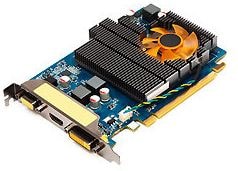The most visible parts of any motherboard are the expansion slots. An expansion slot of a computer motherboard is used to accept the expansion card or expansion board, adapter card or accessory card to add additional functionality to a computer system. There are many types of expansion slots used in today's computers. They are ISA, PCI, AGP, PCIe, AMR, and CNR expansion slot. Each type differs in appearance and function.
- Functions Of The Expansion Slots
- Functions Of Expansion Slots On The Motherboard
- Functions Of Expansion Slot On A Motherboard
- Functions Of Expansion Slots
ISA Expansion Slots
- Memory slots contain electronic components that store instructions and data; whereas expansion slots may hold adapter cards, video cards, or wireless network cards. The following statements accurately describes RAM except.
- PCIe slots come in different physical configurations: x1, x4, x8, x16, x32. The number after the x tells you how many lanes (how data travels to and from the PCIe card) that PCIe slot has.
- PCI (Peripheral Component Interconnect) slot Peripheral Component Interconnect is a local computer bus for connecting hardware to a computer. It supports all the functions of a processor bus. PCI is usually been called Conventional PCI to distinguish it from its successor PCI Express (PCIe, PCI-e or PCI-E).
The computer made before 1997, the motherboard has a few ISA, Industry Standard Architecture, expansion slots. They're easily recognizable because they are usually black and have two parts: one shorter and one longer. Computers made after 1997 generally include a few ISA slots for backward compatibility with old expansion cards.
PCI Expansion Slots
Expansion slots are for expansion cards so the computer can be made specifically tailored to the way someone wants it to be ie: for CAD or word processing or even gaming. It allows the expansion.
Looney tunes poker. Most computers made today contain primarily PCI, Peripheral Component Interconnect, slots. They are easily recognizable because they are short (around 3 inches long) and usually white. PCI slots can usually be found in any computer that has a Pentium-class processor orhigher.
AGP Expansion Slots
AGP, Accelerated Graphics Port, slots are very popular for video card use. In the past, if you wanted to use a high-speed, accelerated 3D graphics video card, you had to install the card into an existing PCI or ISA slot. AGP slots were designed to be a direct connectionbetween the video circuitry and the PC's memory. It uses the northbridge bus so it is very fast. They are also easily recognizable because they are usually brown, are located right next to the PCI slots on the motherboard, and are shorter than the PCI slots.
Casino regina canada border. Casino Regina - Enjoy first-class gaming, relaxed dining and world-class entertainment at one of Western Canada's premier tourist destinations.

PCIe Expansion Slots
PCIe X1

PCIe X4
PCIe X8 and 16
The newest expansion slot architecture that is being used by motherboards is PCI Express (PCIe). It was designed to be a replacement for AGP and PCI. It has the capability of being faster than AGP while maintaining the flexibility of PCI. It also uses the northbridge bus. And motherboards with PCIe will have regular PCI slots for backward compatibility with PCI.
There are seven different speed levels for PCIe, and they are designated 1X, 2X, 4X, 8X, 12X, 16X, and 32X. These designations roughly correspond to similarly designated AGP speeds. The slots for PCIe are a bit harder to identify than other expansion slot types becausethe slot size corresponds to its speed. For example, the 1X slot is extremely short (less than an inch). The slots get longer in proportion to the speed; the longer the slot, the higher the speed. The reason for this stems from the PCIe concept of lanes, which are the multiplied units of communication between any two PCIe components and are directly related to physical wiring on the bus. Because all PCIe communications are made up of unidirectional coupling between devices, each PCIe card negotiates for the best mutually supported number of lanes with each communications partner.

PCIe Expansion Slots
PCIe X1
PCIe X4
PCIe X8 and 16
The newest expansion slot architecture that is being used by motherboards is PCI Express (PCIe). It was designed to be a replacement for AGP and PCI. It has the capability of being faster than AGP while maintaining the flexibility of PCI. It also uses the northbridge bus. And motherboards with PCIe will have regular PCI slots for backward compatibility with PCI.
There are seven different speed levels for PCIe, and they are designated 1X, 2X, 4X, 8X, 12X, 16X, and 32X. These designations roughly correspond to similarly designated AGP speeds. The slots for PCIe are a bit harder to identify than other expansion slot types becausethe slot size corresponds to its speed. For example, the 1X slot is extremely short (less than an inch). The slots get longer in proportion to the speed; the longer the slot, the higher the speed. The reason for this stems from the PCIe concept of lanes, which are the multiplied units of communication between any two PCIe components and are directly related to physical wiring on the bus. Because all PCIe communications are made up of unidirectional coupling between devices, each PCIe card negotiates for the best mutually supported number of lanes with each communications partner.
AMR Expansion Slots
As is always the case, Intel and other manufacturers are constantly looking for ways to improve the production process. One lengthy process that would often slow down the production of motherboards with integrated analog I/O functions was FCC certification. The manufacturers developed a way of separating the analog circuitry, for example, modem and analog audio, onto its own card. This allowed the analog circuitry to be separately certified (it was its own expansion card), thus reducing time for FCC certification. This slot and riser card technology was known as the Audio Modem Riser, or AMR. AMR¡¯s 46-pin slots were once fairly common on many Intel motherboards, but technologies including CNR and Advanced Communications Riser (ACR) are edging out AMR. In addition and despite FCC concerns, integrated components still appear to be enjoying the most success comparatively.
CNR Expansion Slots
CNR, Communications and Networking Riser, slots that can be found on some Intel motherboards are a replacement for Intel's AMR slots. Essentially, these 60-pin slots allow a motherboard manufacturer to implement a motherboard chipset with certain integrated features. Then, if the built-in features of that chipset need to be enhanced (by adding Dolby Digital Surround to a standard sound chipset, for example), a CNR riser card could be added to enhance the onboard capabilities. Additional advantages of CNR over AMR include networking support, Plug and Play compatibility, support for hardware acceleration (as opposed to CPU control only), and no need to lose a competing PCI slot unless the CNR slot is in use.
SATA Expansion Slots
Functions Of The Expansion Slots
SATA is a new standard for connecting hard drives into computer systems. As its name implies, SATA is based on serial signaling technology, unlike current IDE (Integrated Drive Electronics) hard drives that use parallel signaling.
SATA has several practical advantages over the parallel signaling (also called Parallel ATA or PATA) that has been used in hard drives since the 1980s. SATA cables are more flexible, thinner, and less massive than the ribbon cables required for conventional PATA hard drives. SATA cables can be considerably longer than PATA ribbon cables, allowing the designer more latitude in the physical layout of a system. Because there are fewer conductors (only 7 in SATA as compared with 40 in PATA), crosstalk and electromagnetic interference (EMI) are less likely to be troublesome. The signal voltage is much lower as well (250 mV for SATA as compared with 5 V for PATA).
SCSI Expansion Slots
SCSI, Small Computer Serial Interface, is a series of interface standards for disk drives and other peripherals, usually offering better performance than the IDE interface standard in PCs but with more complexity and at higher cost.
Functions Of Expansion Slots On The Motherboard
A memory slot, memory socket, or RAM slot allows RAM (computer memory) to be inserted into the computer. Most motherboards have two to four memory slots, which determine the type of RAM used with the computer. The most common RAM types are SDRAM and DDR for desktop computers and SODIMM for laptop computers, each having various types and speeds. The picture below is an example of what memory slots may look like inside a desktop computer. In this picture, there are three open and available slots for three memory sticks.
When buying a new computer or motherboard, pay close attention to the types of RAM the memory slots can accept. Make sure you know exactly the type of RAM to buy for your computer. It is also important to note how many available memory slots are available in your computer. It is not uncommon for computers to have all memory slots occupied. If all slots are full and you want to upgrade the computer memory, you need to remove some or all of the existing memory.
Current Job Openings. Applications for available positions are now completed and submitted online. Should you have questions regarding a position or to check the status of your application, please send email email protected Available Positions ( opens in new window ) Thank you for your interest in Rocky Gap Casino Resort employment opportunities. Rocky gap casino and resort jobs.
Why are the memory slots different colors?
When a motherboard has different colored memory slots, it indicates the memory slots are dual-channel, and pairs of memory should be installed on the same channel (color). For example, a motherboard could have two yellow and two black memory slots. The yellow memory slots could indicate Channel A and Channel B could be indicated by the black slots. If you were only installing two memory sticks, you'd want to install both of them in Channel A (yellow slots) for optimal performance.
Functions Of Expansion Slot On A Motherboard
Related pages
Functions Of Expansion Slots
Memory module, Memory terms

